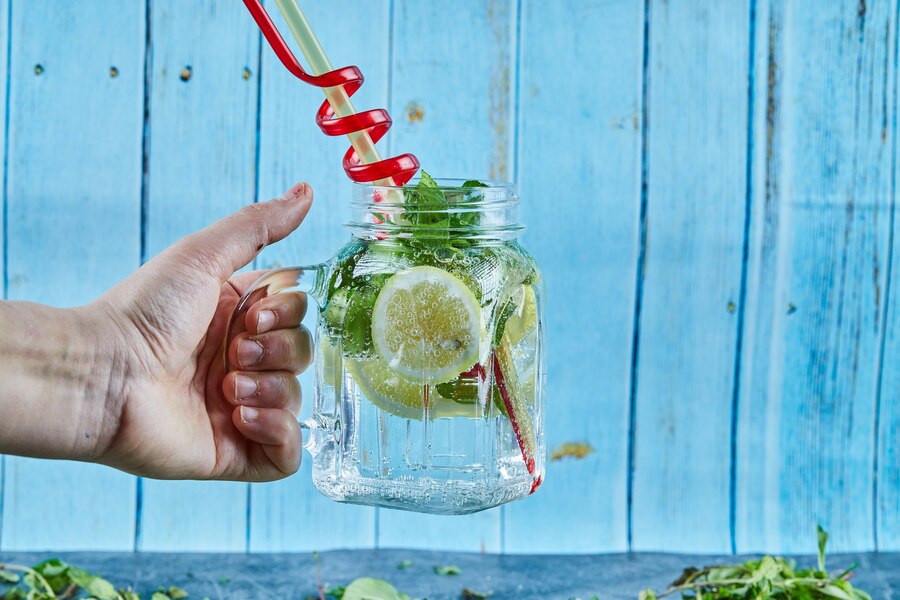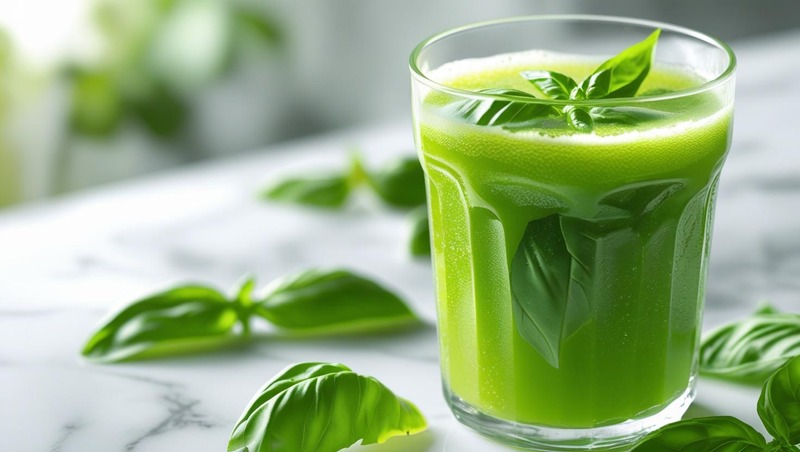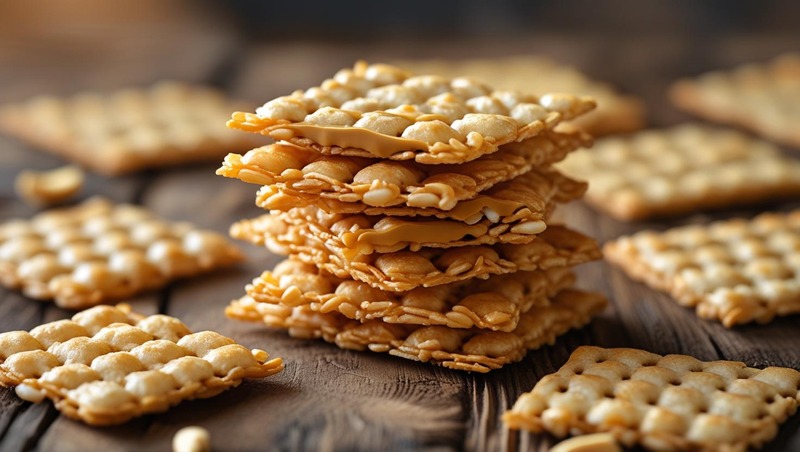Food And Drinks
What Are Spritzers? A Complete Guide to This Refreshing Drink

Introduction
Spritzers are light, effervescent beverages that blend wine or spirits with sparkling water or soda, creating a refreshing drink perfect for any occasion. Originating from 19th-century Europe, these drinks are now a global favorite, evolving with countless variations. In this article, we’ll explore everything about spritzers—from their history and preparation techniques to their health benefits and creative recipes.
The Origins of Spritzers
Spritzers trace their roots to the Austro-Hungarian Empire, where wine was traditionally diluted with sparkling water to make it more palatable. The term “spritzer” comes from the German word spritzen, meaning “to spray,” reflecting the bubbly character of the drink. This tradition has since evolved, giving rise to countless spritzer styles across Europe and the world.
What Are Spritzers Made Of?
The classic spritzer combines three main components:
- Base Beverage: Often wine (white, rosé, or red) or a spirit like vodka.
- Carbonated Mixer: Sparkling water, soda water, or even prosecco.
- Optional Add-ins: Fresh fruits, herbs, or syrups for flavor and garnish.
Popular recipes include:
- White wine spritzers with citrus and soda water.
- Rosé spritzers with berries and mint.
- Italian Aperol spritzers made with prosecco and Aperol.
Why Are Spritzers So Popular?
Spritzers are versatile, customizable, and lighter than many traditional cocktails. Here’s why they’ve captured global attention:
- Lower Alcohol Content: Diluting wine with sparkling water reduces the alcohol and calorie count, making them a healthier choice.
- Perfect for Any Occasion: From summer brunches to winter gatherings, spritzers can be tailored to suit the season.
- Easy to Make: With simple ingredients and no special equipment required, anyone can craft a spritzer.
Comparison Chart: Spritzers vs. Other Light Cocktails
| Feature | Spritzers | Mimosa | Sangria |
|---|---|---|---|
| Base Alcohol | Wine or spirits | Champagne | Wine |
| Mixer | Sparkling water/soda | Orange juice | Fruit juice/soda |
| Add-ins | Herbs, fruits, syrups | None | Fresh fruits, brandy |
| Alcohol Content | Lower | Moderate | Moderate |
| Serving Occasion | All seasons | Breakfast/brunch | Summer parties |
| Calorie Count | Lower (varies by recipe) | Moderate | Higher |
How to Make the Perfect Spritzer
Crafting a spritzer is simple but can be elevated with a few tips:
- Choose the Right Base: Light, aromatic wines like Sauvignon Blanc or Prosecco work best.
- Balance Ratios: A common mix is 1:1 wine to soda, but adjust to taste.
- Add Fresh Elements: Enhance with citrus slices, fresh berries, or a sprig of rosemary.
- Chill Thoroughly: Serve over ice and use pre-chilled ingredients for maximum refreshment.
- Experiment: Try unique combinations like elderflower liqueur with sparkling wine or pomegranate sprit-zers for the holidays.
Seasonal Spritzer Ideas
Sprit-zers adapt beautifully to seasonal ingredients:
- Spring: Add cucumber slices and mint.
- Summer: Use tropical fruits like mango or pineapple.
- Autumn: Incorporate apple cider and a cinnamon stick.
- Winter: Mix cranberry juice with prosecco and garnish with pomegranate seeds.
The Rise of Aperol Spritzers
Aperol sprit-zers have become iconic, especially in the U.S. thanks to strategic marketing campaigns since the 2010s. Combining prosecco, Aperol, and soda water, this bright orange drink has become synonymous with aperitivo culture, particularly in Italy. It’s a perfect balance of sweet, bitter, and bubbly flavors.
Health Benefits of Spritzers
Sprit-zers are not just delicious—they’re also a lighter option compared to full-strength cocktails:
- Lower Calorie Content: By diluting wine, you reduce both alcohol and calorie intake.
- Hydration Boost: The added sparkling water helps keep you hydrated.
- Customizable Ingredients: Opt for fresh, natural ingredients to avoid added sugars.
Spritzers and Food Pairings
Pairing spritzers with the right food enhances their appeal:
- White Wine Sprit-zer: Perfect with seafood, salads, or light appetizers.
- Rosé Sprit-zer: Pairs well with grilled chicken or fresh pasta.
- Red Wine Sprit-zer: Complements hearty dishes like pizza or stews.
The Global Appeal of Spritzers
Sprit-zers have found a place in cultures worldwide, with local twists:
- Europe: Traditional wine-based sprit-zers dominate.
- USA: Fruity, vibrant sprit-zers are a summer favorite.
- Asia: Tea-based sprit-zers with sparkling water are gaining traction.
Conclusion
Spritzers are more than just a drink—they’re a lifestyle. With endless variations, they’re versatile, light, and perfect for any season or occasion. Whether you prefer a classic wine spritzer or an innovative herbal concoction, this timeless beverage continues to delight drinkers around the globe.
Food And Drinks
Basil Juice: A Refreshing Elixir with Surprising Health Benefits

Have you ever wondered how a simple herb like basil could transform your health? Beyond its culinary charm, basil packs a powerful punch when juiced—delivering a burst of flavor and a treasure trove of wellness benefits. From boosting immunity to reducing stress, basil juice is a hidden gem in the world of natural remedies.
In this guide, we’ll explore:
✅ The science-backed benefits of basil juice
✅ How to make it at home (plus tasty recipes!)
✅ Expert tips for maximum health perks
✅ Who should (and shouldn’t) drink it
Let’s dive into why this aromatic herb deserves a spot in your daily routine.
Why Basil Juice? The Science Behind Its Superpowers
Basil (Ocimum basilicum) isn’t just for pesto—it’s a medicinal powerhouse. Research highlights its rich content of:
🔹 Antioxidants (e.g., flavonoids & polyphenols) – Combat oxidative stress.
🔹 Essential oils (e.g., eugenol & linalool) – Offer anti-inflammatory effects.
🔹 Vitamins A, C, K, and minerals – Support immunity and bone health.
Top 5 Proven Benefits of Basil Juice
-
Boosts Immunity
-
A study in Journal of Ayurveda found holy basil (Tulsi) enhances immune response.
-
Vitamin C fights infections, while eugenol acts as a natural antimicrobial.
-
-
Reduces Stress & Anxiety
-
Adaptogenic properties help regulate cortisol (the stress hormone).
-
A 2021 study in Evidence-Based Complementary Medicine showed basil lowers anxiety markers.
-
-
Supports Digestion
-
Soothes bloating and indigestion by stimulating digestive enzymes.
-
Acts as a mild diuretic, aiding detox.
-
-
Anti-Inflammatory & Pain Relief
-
Eugenol mimics NSAIDs (like ibuprofen) without side effects.
-
Helps with arthritis and muscle soreness.
-
-
Balances Blood Sugar
-
Research in Diabetes & Metabolic Syndrome found basil improves insulin sensitivity.
-
How to Make Basil Juice (3 Easy Recipes)
1. Classic Fresh Basil Juice
Ingredients:
-
1 cup fresh basil leaves
-
1 cucumber (peeled)
-
1 green apple (for sweetness)
-
½ lemon (juiced)
-
1-inch ginger (optional, for spice)
Method:
-
Blend all ingredients with ½ cup water.
-
Strain through a nut milk bag or fine sieve.
-
Serve chilled over ice.
Pro Tip: Add a pinch of black pepper to enhance nutrient absorption!
2. Detox Basil Lemonade
Ingredients:
-
½ cup basil leaves
-
Juice of 2 lemons
-
1 tbsp raw honey (or maple syrup)
-
2 cups cold water
-
Ice cubes
Method:
-
Muddle basil leaves with honey.
-
Mix in lemon juice and water.
-
Strain and enjoy!
3. Tropical Basil Smoothie
Ingredients:
-
1 cup basil
-
1 cup pineapple (anti-inflammatory)
-
½ banana (for creaminess)
-
1 cup coconut water (electrolytes)
Blend & go!
Who Should (and Shouldn’t) Drink Basil Juice?
👍 Best For:
✔ Stress-prone individuals – Calms the nervous system.
✔ Diabetics – Helps regulate blood sugar.
✔ Fitness enthusiasts – Reduces muscle inflammation.
✔ Skin health seekers – Fights acne with antibacterial properties.
👎 Avoid If:
❌ Pregnant women – High amounts may stimulate uterine contractions.
❌ Low blood pressure patients – Basil can further reduce BP.
❌ On blood thinners – Vitamin K may interfere with medication.
Always consult a doctor before making it a daily habit!
Expert Tips for Maximum Benefits
-
Use fresh leaves – Dried basil loses volatile oils.
-
Drink in the morning – Enhances digestion and mental clarity.
-
Pair with healthy fats (e.g., avocado) – Boosts absorption of fat-soluble vitamins.
Final Thoughts: Is Basil Juice Worth the Hype?
Absolutely! Whether you sip it as a morning tonic or a post-workout refresher, basil juice is a delicious way to harness nature’s healing powers. With benefits ranging from stress relief to better digestion, this humble herb deserves a prime spot in your wellness routine.
Ready to give it a try? Whip up a batch today and toast to better health—one sip at a time!
Food And Drinks
Peanut Butter Rice Crackers: A Nutritious Snack You’ll Love

Ever crave a snack that’s crispy, protein-packed, and irresistibly delicious? Peanut butter rice crackers might just be your next go-to treat. Whether you’re looking for a quick energy boost, a gluten-free alternative, or just a satisfying crunch, these little bites deliver on taste and nutrition.
In this article, we’ll explore:
✔ What makes peanut butter rice crackers so good (hint: it’s not just the taste!)
✔ How to make them at home (easy, customizable recipes)
✔ Store-bought vs. homemade—which is better?
✔ Creative ways to enjoy them (beyond plain snacking)
Let’s dive in!
Why Peanut Butter Rice Crackers Are a Snack Superstar
1. Perfect Balance of Crunch and Creaminess
Rice crackers are light and crispy, while peanut butter adds a rich, creamy contrast. This combo satisfies both texture and flavor cravings in one bite.
2. Packed with Protein & Healthy Fats
Peanut butter is a great source of plant-based protein (about 7g per 2 tbsp) and heart-healthy monounsaturated fats. Paired with rice (a low-calorie carb), it makes for a balanced snack that keeps you full longer.
3. Gluten-Free & Vegan-Friendly
Most rice crackers are naturally gluten-free, making them a safe choice for those with sensitivities. Pair them with natural peanut butter (no additives), and you’ve got a vegan-friendly snack.
4. Quick Energy for Busy Days
Need a pre-workout boost or an afternoon pick-me-up? The carbs in rice crackers provide fast energy, while peanut butter offers sustained fuel.
How to Make Peanut Butter Rice Crackers at Home
Skip the store-bought versions (often loaded with sugar and preservatives) and try this simple, customizable recipe.
Basic Homemade Peanut Butter Rice Crackers
(Makes about 20 crackers)
Ingredients:
-
1 cup rice flour (brown or white)
-
¼ cup natural peanut butter (unsweetened)
-
2 tbsp water (adjust as needed)
-
½ tsp salt
-
1 tsp honey or maple syrup (optional for sweetness)
-
1 tbsp sesame seeds or chia seeds (optional for crunch)
Instructions:
-
Mix the dough – Combine rice flour, peanut butter, salt, and sweetener (if using). Gradually add water until a firm dough forms.
-
Roll it thin – Place dough between two sheets of parchment paper and roll to ⅛-inch thickness.
-
Cut into shapes – Use a knife or cookie cutter to make squares or circles.
-
Bake – Preheat oven to 350°F (175°C). Bake for 12–15 minutes until golden and crisp.
-
Cool & enjoy! – Let them cool completely for maximum crunch.
Pro Tip: For extra flavor, sprinkle with cinnamon, chili powder, or a drizzle of dark chocolate after baking.
Store-Bought vs. Homemade: Which Wins?
✔ Store-Bought Pros:
-
Convenient for on-the-go snacking.
-
Wide variety (e.g., Quaker, Lundberg, Asian-style rice crackers).
✖ Store-Bought Cons:
-
Often contain added sugars, oils, and preservatives.
-
Less fresh and customizable.
✔ Homemade Pros:
-
Full control over ingredients (organic, sugar-free, etc.).
-
Fresher, crispier, and more flavorful.
Verdict: If you have 20 minutes, homemade is the way to go! Otherwise, opt for brands with minimal ingredients.
5 Creative Ways to Enjoy Peanut Butter Rice Crackers
-
Top with Banana Slices – A classic combo for a sweet, filling snack.
-
Make a Mini Sandwich – Add a dab of jelly or honey for a PB&J twist.
-
Dip in Yogurt – Greek yogurt + crushed crackers = protein-packed crunch.
-
Crush Over Ice Cream – Adds texture to vanilla or chocolate scoops.
-
Trail Mix Upgrade – Break into pieces and mix with nuts and dark chocolate chips.
Final Thoughts: Are Peanut Butter Rice Crackers Worth the Hype?
Absolutely! They’re:
✅ Easy to make (even for beginners)
✅ Nutritious (protein, fiber, healthy fats)
✅ Versatile (sweet or savory, snack or meal topper)
Next time hunger strikes, skip the chips and grab (or make) peanut butter rice crackers instead. Your taste buds—and body—will thank you!
Food And Drinks
The Prosciutto Sandwich with Mozzarella: A Gourmet Guide

What’s better than the perfect combination of salty prosciutto and creamy mozzarella on fresh bread?
Whether you’re packing a quick lunch, hosting a picnic, or craving an Italian-inspired snack, a prosciutto and mozzarella sandwich is a timeless classic. But not all versions are created equal. With the right ingredients and techniques, you can elevate this simple sandwich into a gourmet masterpiece.
In this guide, we’ll break down everything you need to know—from selecting the best ingredients to pro assembly tips—so you can craft the perfect prosciutto and mozzarella sandwich every time.
Why Prosciutto and Mozzarella Make the Perfect Pair
Prosciutto (dry-cured Italian ham) and fresh mozzarella are a match made in culinary heaven. Here’s why:
-
Salty & Creamy Balance: The saltiness of prosciutto contrasts beautifully with the mild, milky mozzarella.
-
Texture Play: Prosciutto’s delicate crispness complements the soft, melt-in-your-mouth cheese.
-
Versatility: This duo works in paninis, cold sandwiches, or even as an appetizer on crusty bread.
According to Chef Massimo Bottura, “Italian cuisine thrives on simplicity—fewer ingredients, but of the highest quality.” That’s exactly what makes this sandwich shine.
Ingredients for the Perfect Prosciutto Mozzarella Sandwich
1. The Bread: Foundation Matters
The right bread can make or break your sandwich. Consider:
-
Ciabatta: Crispy crust, airy interior—great for paninis.
-
Focaccia: Olive oil-infused and slightly chewy.
-
Baguette: Crunchy outside, soft inside—ideal for a classic Italian feel.
Pro Tip: Lightly toast the bread to prevent sogginess from the mozzarella’s moisture.
2. The Prosciutto: Quality Over Quantity
Not all prosciutto is equal. Look for:
-
Prosciutto di Parma (DOP): Aged 18+ months, sweet and delicate.
-
Prosciutto di San Daniele: Slightly richer, nuttier flavor.
Avoid pre-sliced supermarket versions—opt for freshly sliced at a deli for the best texture.
3. The Mozzarella: Freshness is Key
-
Fresh Mozzarella (Fior di Latte): Creamy, soft, and milky.
-
Buffalo Mozzarella: Richer, tangier, and more luxurious.
Storage Tip: Keep mozzarella in its brine until use to maintain moisture.
4. The Extras: Elevate Your Sandwich
-
Greens: Arugula, basil, or spinach add freshness.
-
Condiments: Olive oil, balsamic glaze, or pesto enhance flavor.
-
Extras: Sun-dried tomatoes, roasted peppers, or a drizzle of honey for depth.
Step-by-Step Assembly: How to Build the Perfect Sandwich
1. Prep Your Ingredients
-
Slice bread (if not pre-sliced).
-
Drain mozzarella and pat dry to avoid a soggy sandwich.
-
Wash and dry greens.
2. Layer Like a Pro
-
Base Layer: Drizzle olive oil or spread pesto on bread.
-
Cheese First: Place mozzarella slices to act as a moisture barrier.
-
Prosciutto Next: Layer 2-3 thin slices for optimal flavor.
-
Add Greens & Extras: Arugula, tomatoes, or a balsamic drizzle.
-
Final Touch: Top with another bread slice and press gently.
Panini Option: Grill in a panini press for a warm, melty version.
Creative Variations to Try
1. The Classic Italian (Panino al Prosciutto e Mozzarella)
-
Ciabatta
-
Fresh mozzarella
-
Prosciutto di Parma
-
Basil leaves
-
Olive oil & cracked black pepper
2. The Gourmet Grilled Cheese
-
Sourdough bread
-
Buffalo mozzarella
-
Prosciutto
-
Fig jam (for a sweet-savory twist)
3. The Light & Fresh Wrap
-
Whole wheat tortilla
-
Mozzarella
-
Prosciutto
-
Arugula & sun-dried tomatoes
-
Balsamic reduction
Serving Suggestions & Pairings
-
Wine: Pair with a light Pinot Grigio or Prosecco.
-
Sides: Serve with olives, roasted nuts, or a simple caprese salad.
-
Occasions: Perfect for picnics, brunch, or a quick gourmet lunch.
Final Thoughts: Keep It Simple, Keep It Delicious
A prosciutto and mozzarella sandwich is all about quality ingredients and smart layering. Whether you stick to the classic or experiment with gourmet twists, this sandwich is a guaranteed crowd-pleaser.
Now, it’s your turn! Grab the freshest ingredients you can find and craft your own masterpiece. Buon appetito!
-

 Articles3 months ago
Articles3 months agoHow Many Times Can You Regrow Green Onions
-

 News10 months ago
News10 months agoUnderstanding HotLeaks: What You Need to Know
-

 Fashion8 months ago
Fashion8 months agoOpals in the USA: A Gemstone Transforming the Crystal Healing Market
-

 Entertainment7 months ago
Entertainment7 months agoHow to Use Snaptik: A Complete Guide to Download TikTok Videos
-

 Technology1 year ago
Technology1 year agoThe Wonders of Oh Em Gee Blog
-

 Entertainment1 year ago
Entertainment1 year agoBare it All: Unforgettable Skinny Dipping Stories Shared
-

 Health1 year ago
Health1 year agoCan You Smoke Shrooms? Exploring the Myths and Realities
-

 Articles5 months ago
Articles5 months agoWHAT IS THE DIFFERENCE BETWEEN SEED GARLIC AND FOOD GARLIC?
